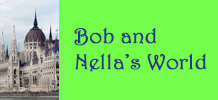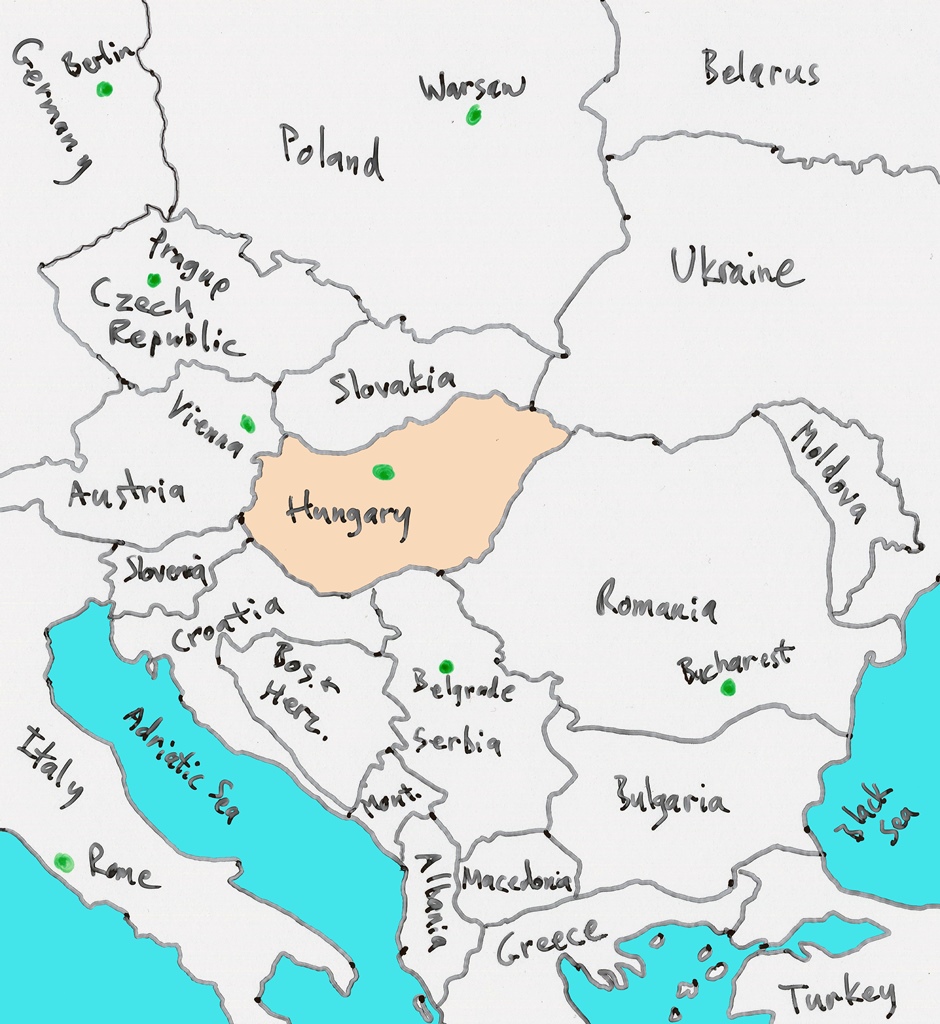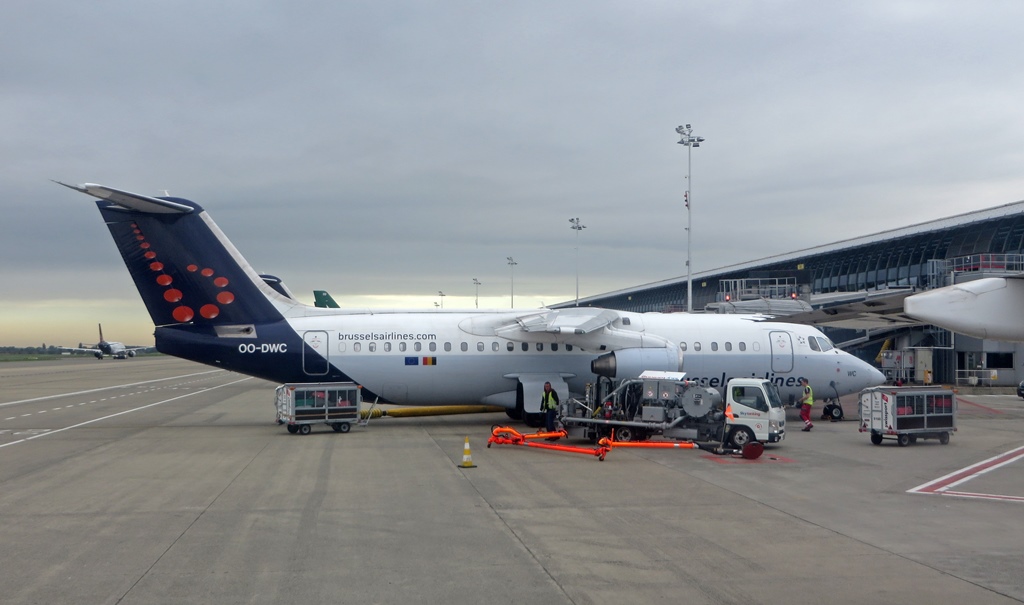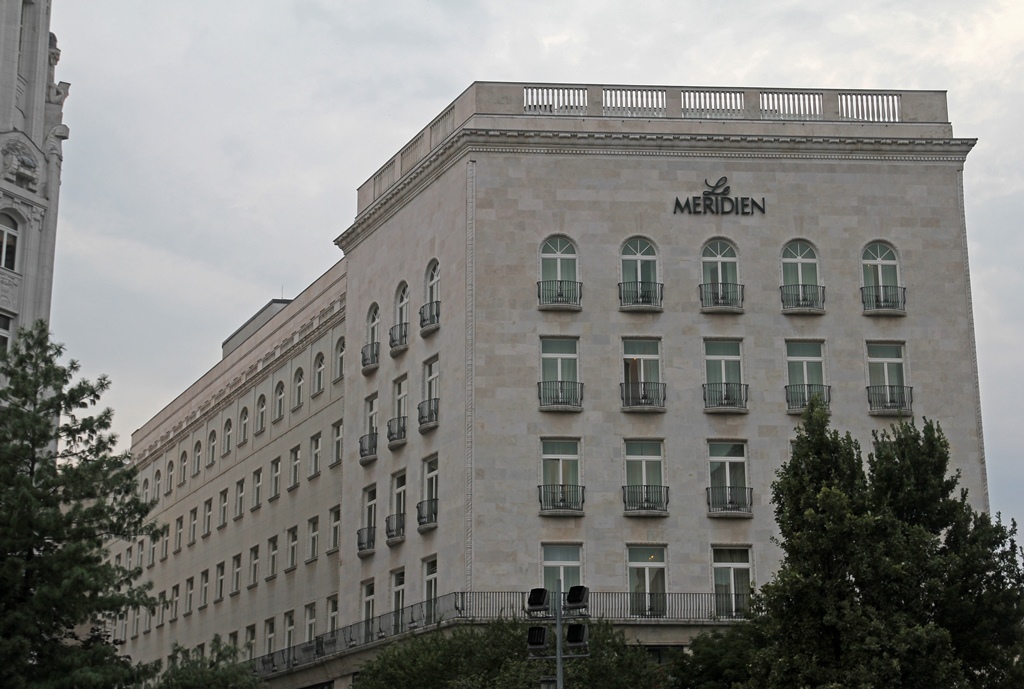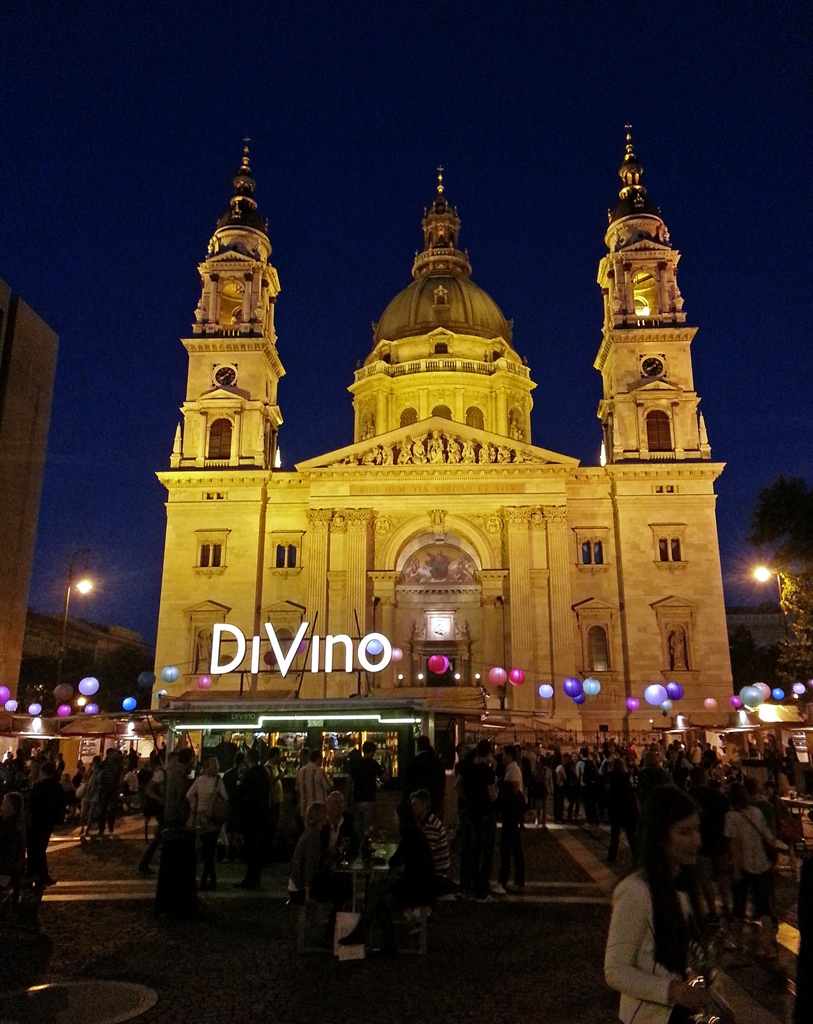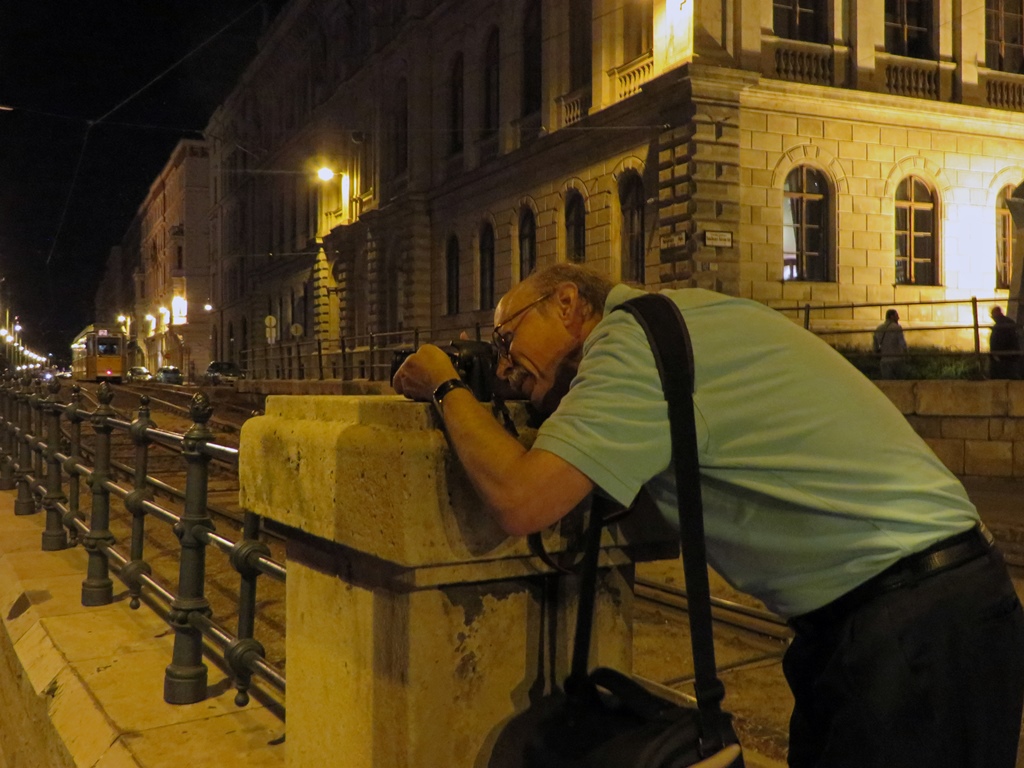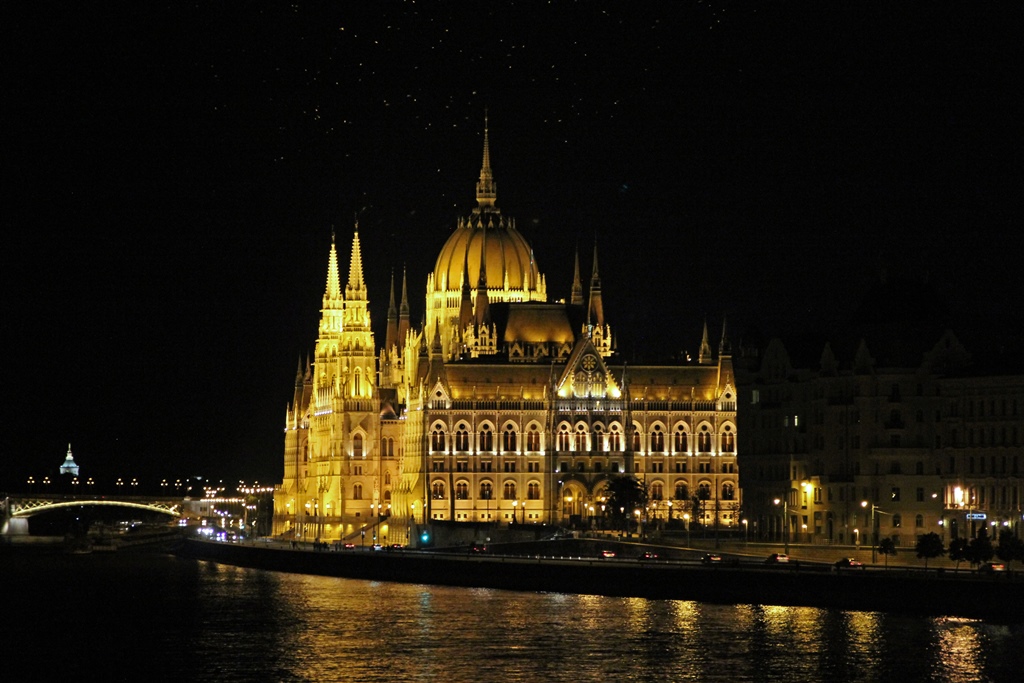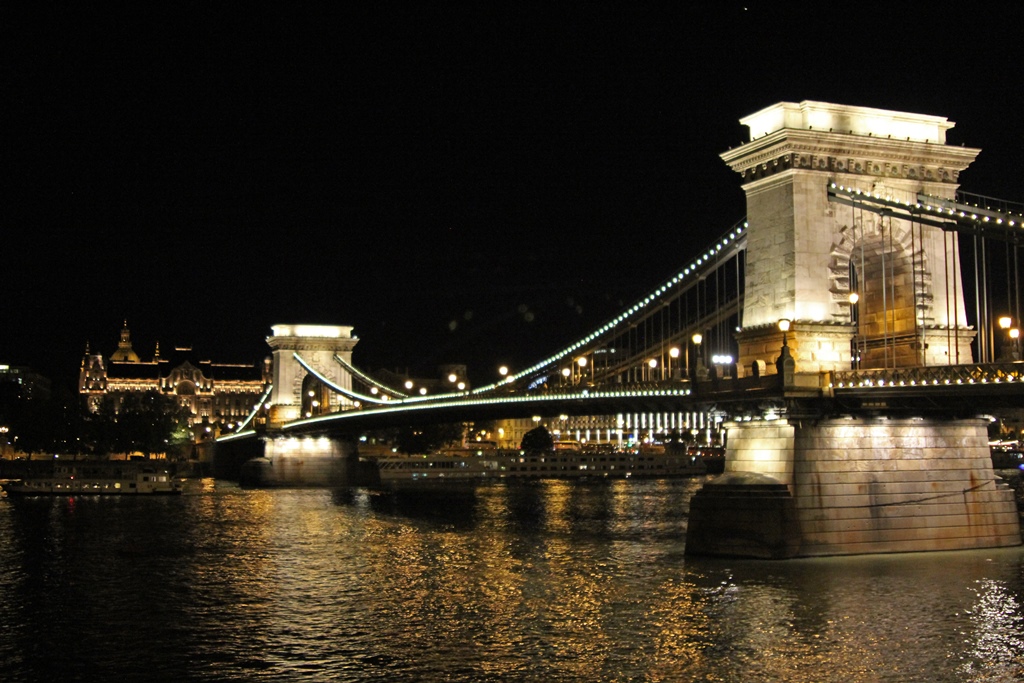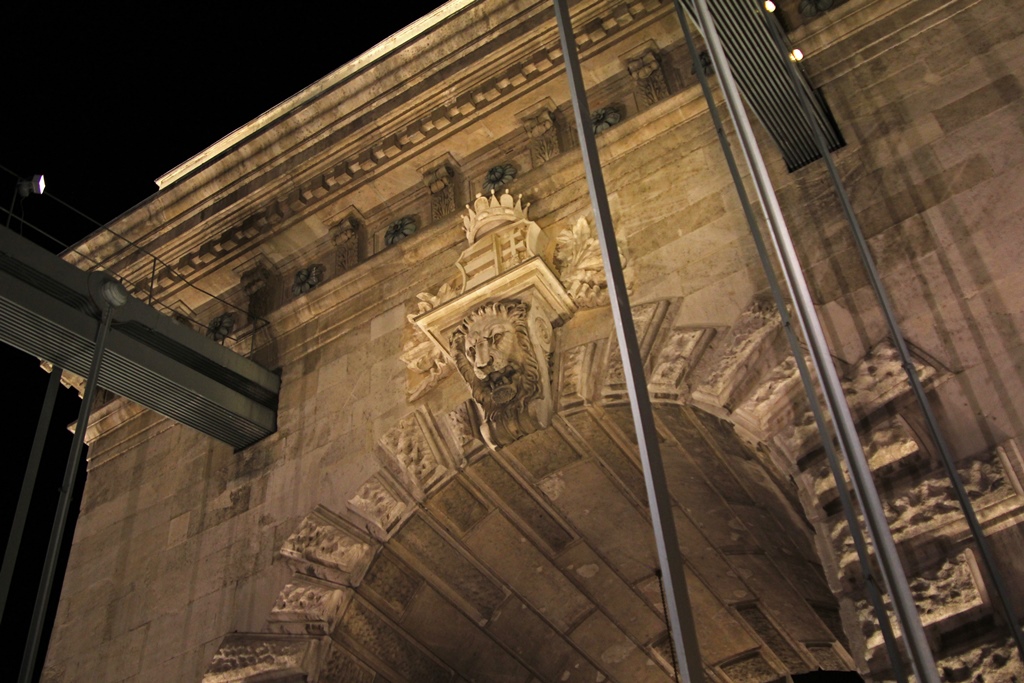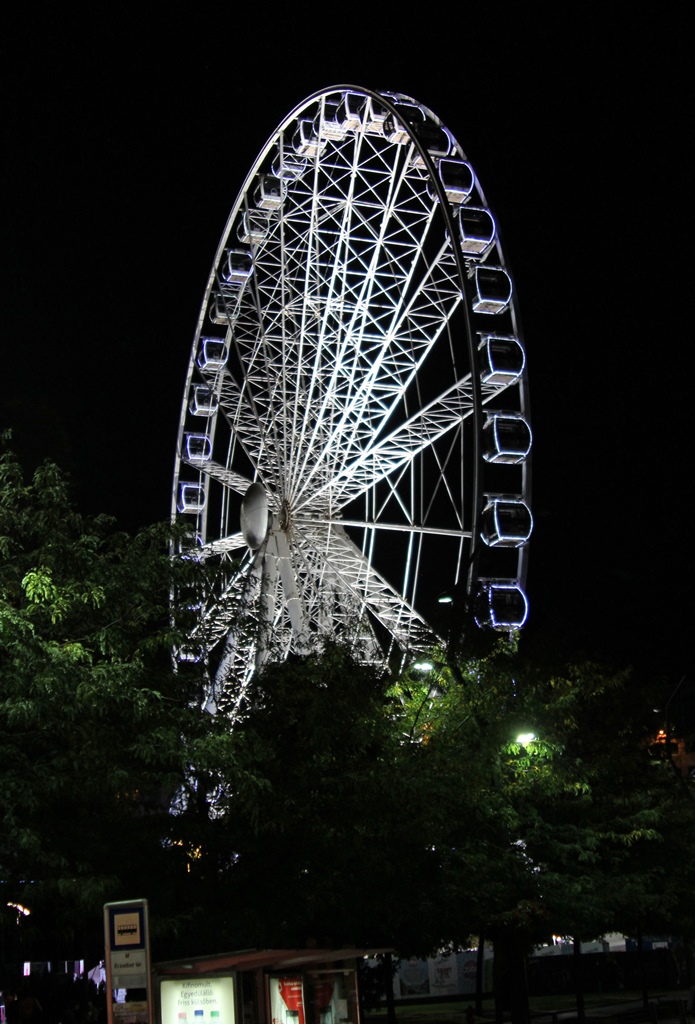Note: A YouTube companion video for this page can be found
here.
Hungary and Vicinity
When planning our 2014 trip, we were feeling somewhat adventurous. Not adventurous enough
to go someplace where we'd have to worry about yellow fever or ebola, but adventurous enough
to want to go to places we'd never visited before, and maybe even to dip our toes into a
place that wasn't as thoroughly westernized as the destinations to which we'd become accustomed.
Hungary seemed to fit this bill pretty well. Not only was it located squarely in the former
Soviet bloc (from whose stewardship it had mostly but not quite completely recovered), but it
had a language that seemed unlike anything we had ever encountered (and which we had not the
slightest chance of mastering to any extent by the time of our projected visit). On the other
hand, the country is predominantly Christian (mostly Roman Catholic), and its capital, Budapest,
was once the co-capital (with Vienna) of Habsburg-ruled Austria-Hungary, so it's not really as
if we were planning an expedition to Mars. We decided to make Budapest our first destination
on this trip.
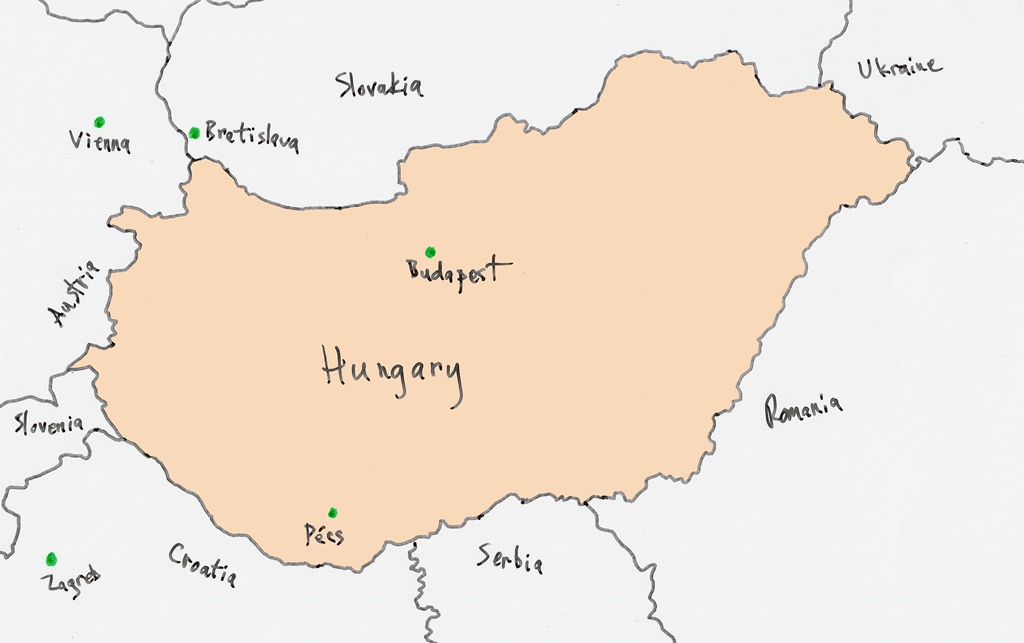
Hungary and its Neighbors
The Hungarian language reflects the streak of independence the Hungarian people have shown
throughout their history. While Hungary is surrounded by countries (seven of them!) that
speak Germanic and Slavic languages, and is not far from Italy, the ancestral home of the Romance
languages, Hungary's language is none of these, instead being classified as a Uralic
language, with roots in the region between the Ural Mountains and the Volga River in Russia.
The only other European languages with similar origins are Finnish and Estonian. The
Hungarian tribes, collectively known as Magyars (pronounced something like "mud-yors",
for reasons unknown), first settled in the region of present-day Hungary around 895 A.D., and
quickly took to launching generally successful invasions of Western Europe which extended as
far as present-day Denmark and Spain. A defeat in 955's Battle of Lechfeld curtailed their
ambitions somewhat, but Hungarians continued to misbehave around the Balkan Peninsula until
about 970. Around this time, the new Grand Prince of the Hungarians, named Géza, made peace
with the Holy Roman Empire and was even baptized as a Christian. Géza turned out to be a less
than fully committed Christian, continuing pagan practices and the consolidation of his power
through "extreme cruelty". But he recognized Christianity as something that would need to be
embraced sooner or later, so he treated visiting Christians well and pressed for the baptism
of many Hungarians. His son, Stephen, became much more personally devout than his father,
and after a short succession struggle with his uncle on Géza's death, he became Hungary's
first king, Stephen I, with recognition from Pope Sylvester II, in the year 1000 (or maybe
1001 – the exact year doesn't seem to be too clear).
Several tumultuous centuries ensued, with Hungary being both perpetrators and perpetratees of
a number of conquests. There were Tartar invasions, more than a century of rule by Turks,
and contentious rule by Austrian Habsburgs. The dual monarchy of Austria-Hungary was formed
in 1867, and modernization followed, along with economic development. But the devastation of
World War I also followed, and the Austro-Hungarian alliance was broken as a condition of the
armistice, with significant loss of territory for Hungary in particular. Between the wars,
Hungary drifted toward antisemitism and suppression of communists who were attempting to gain
influence. Nazi Germany accordingly welcomed Hungary as an axis power when World War II
started, and in the early going, Hungary regained some of the territory it had lost. But
they started having second thoughts after costly defeats to the Soviet Army. On getting wind
of this, German forces occupied the country and installed their own puppet government before
the Hungarians could take any action. The puppet government, as would be expected,
participated in the Holocaust, deporting hundreds of thousands of Hungarian Jews, mostly to
Auschwitz. After the country was eventually overrun by the Red Army, many more thousands of
Hungarians were executed, murdered, or exported as slave labor. The Soviets continued to run
the country as a satellite state until 1989. During a brief, unsuccessful revolution in
1956, nearly a quarter of a million Hungarians used a brief period of open borders to escape
the country, moving to various destinations in the West. Since the eventual Soviet exit, the
country's transition back to a capitalist economy has been somewhat difficult but largely
successful. Hungary has been a member of NATO since 1999.
Getting to Budapest proved to be somewhat complicated. Philip and Connie had other
commitments, so they weren't able to accompany us on this trip (maybe they are actual
adults). We like travelling with them, so we were sorry they couldn't come, but at least
they were spared some of the messy travel arrangements. We started with a five-and-a-half
hour flight to JFK Airport in New York, where we had a three-and-a-half hour layover.
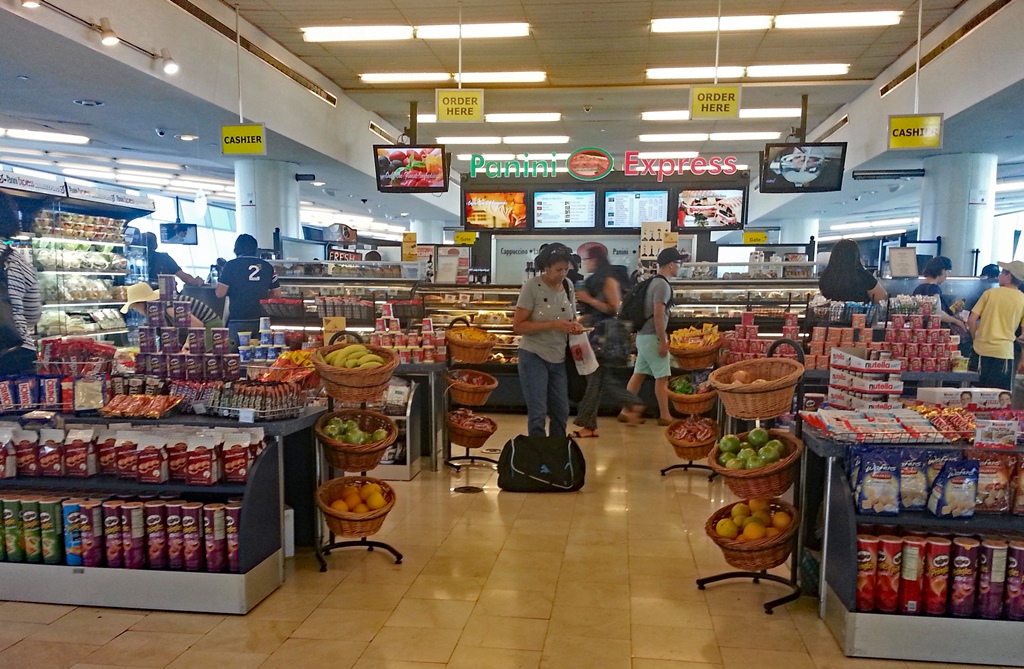
Panini Express, JFK Airport
After the layover, we boarded a Brussels Airlines flight (to Brussels, Belgium of all
places) which took seven-and-a-half hours to cross the Atlantic. We only had a two-hour
layover in Brussels, but we managed to find a quick breakfast at a serve-yourself place
in the airport.
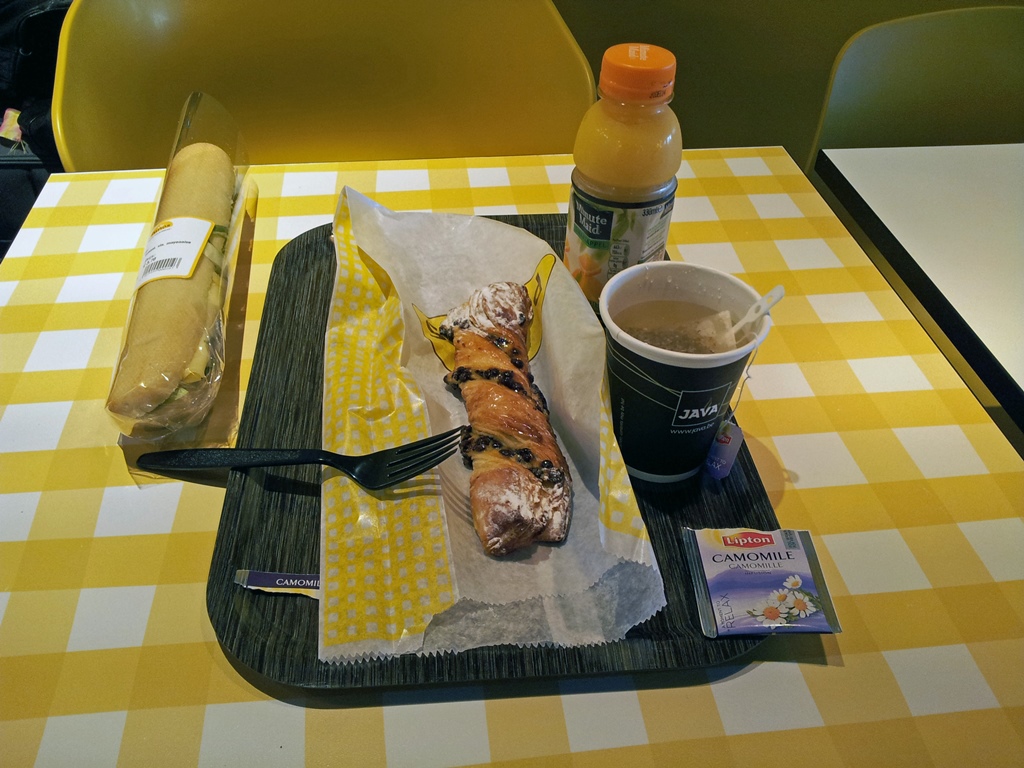
Breakfast, Brussels Airport
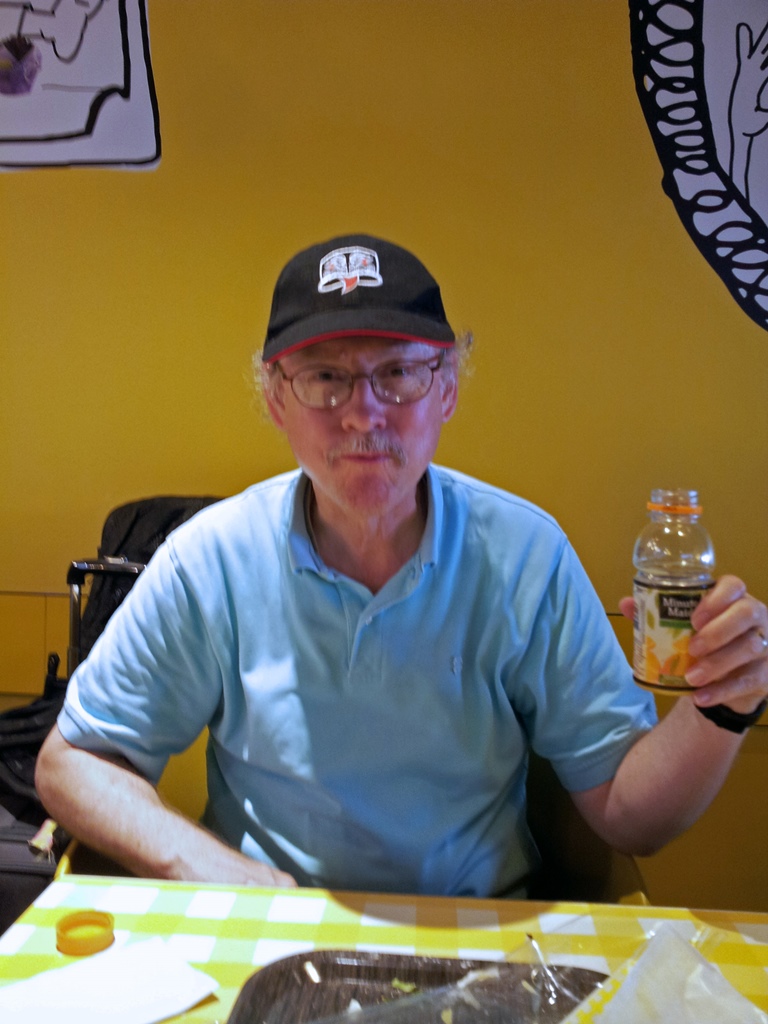
Bob and Orange Juice
Being Brussels, there was naturally some fabulous Belgian chocolate for sale in the airport.
We took a quick look (and some pictures), but we didn't buy anything, as we were in a hurry
to get to our next flight.
Corné Port-Royal Chocolates
The next flight was another one operated by Brussels Airlines, which took us the rest
of the way to Budapest in about two hours. When we were getting close, we could see
the Danube River wending its way across the countryside. It would be easy to say the
city of Budapest is cut into two pieces by the Danube (which flows southward through
the city on its way to the Black Sea), and it is, but Budapest was not a single city
until 1873. Until that time there was a city on the west bank called Buda, and
another on the east bank called Pest (no, I didn't make this up). For centuries
the two cities were close enough together (the river is about 1800 feet wide in
Budapest) to shout greetings and curses at each other, but there was no permanent
connection between them until the Chain Bridge was opened in 1849. The combined city,
with about 1.7 million people, is now the largest in Hungary and the 9th largest in the
EU.
Brussels Airlines Jet
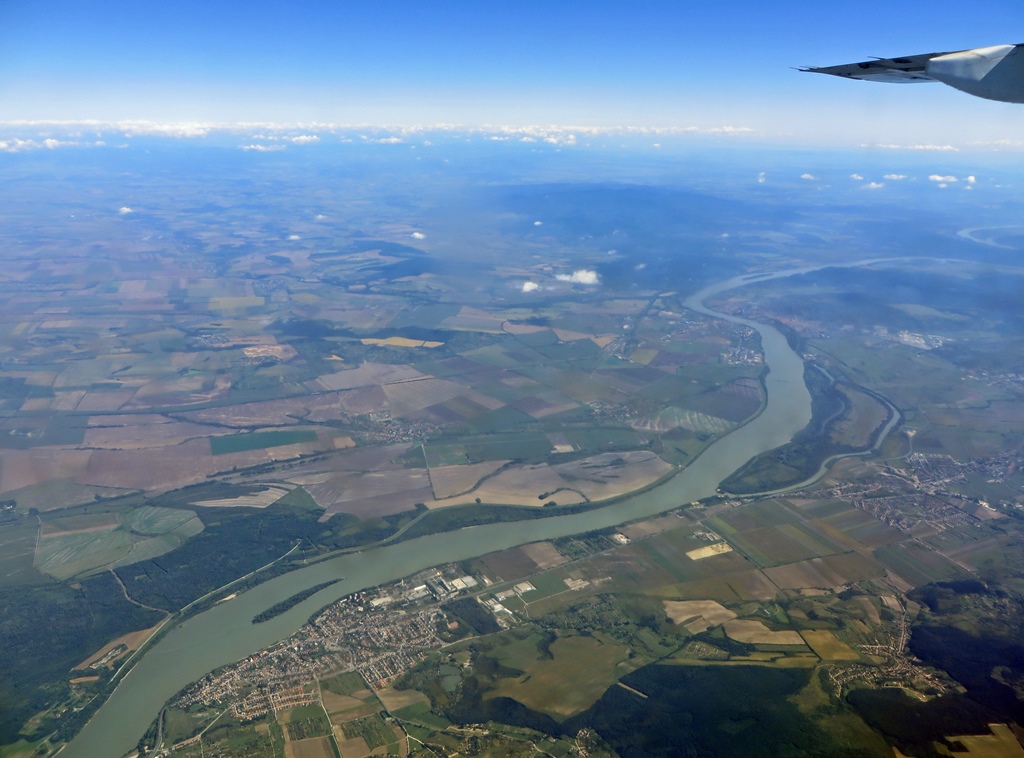
Danube River
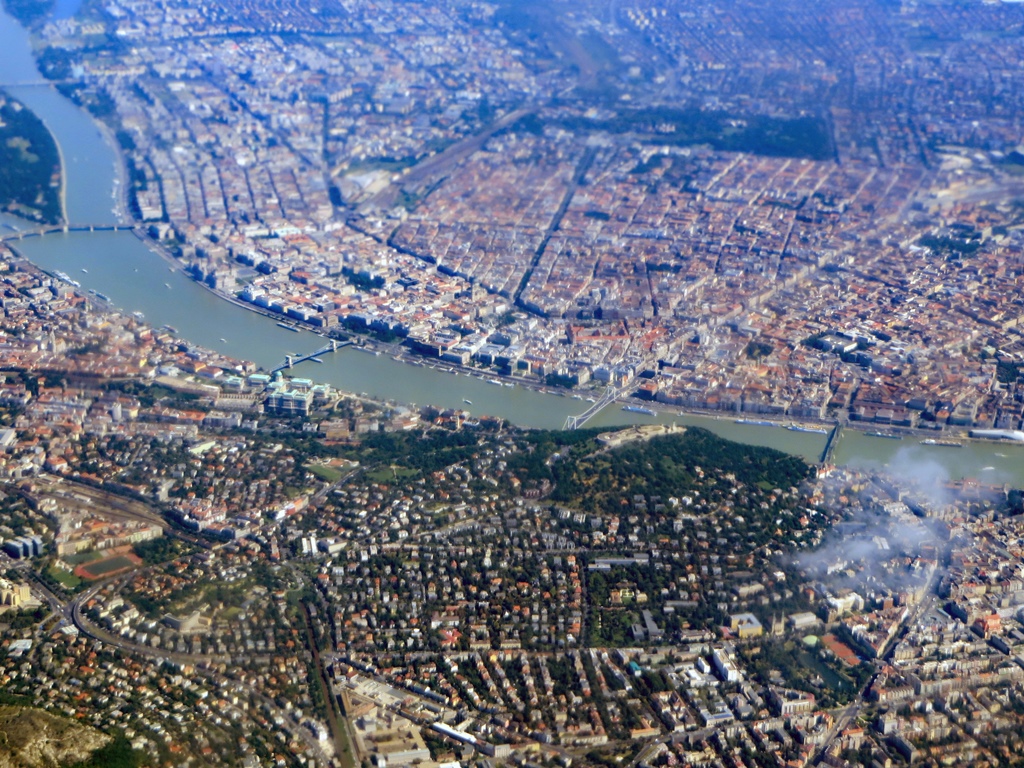
Central Budapest
On landing, we found an ATM in the airport and withdrew several forints (the
local currency, of which there are now about 270 to the U.S. dollar) and boarded a
taxi for our hotel. Expenses in Budapest are reasonably low, certainly for a
European capital, and we were able to stay in a pretty nice hotel, the Le Meridien
(which has become a Ritz-Carlton since our visit).
Le Meridien Budapest
After getting settled, we went out in search of food, as it was approaching 2PM local
time, and we had become hungry since our hasty breakfast in Brussels. Not really
knowing where we were going, we headed south from the hotel and eventually found a
promising-looking place, which appeared to have a garden growing on its walls. Nella
went for a local specialty, goulash soup (the main ingredients seemed to be beef,
vegetables and paprika).

Nella and Vertical Garden
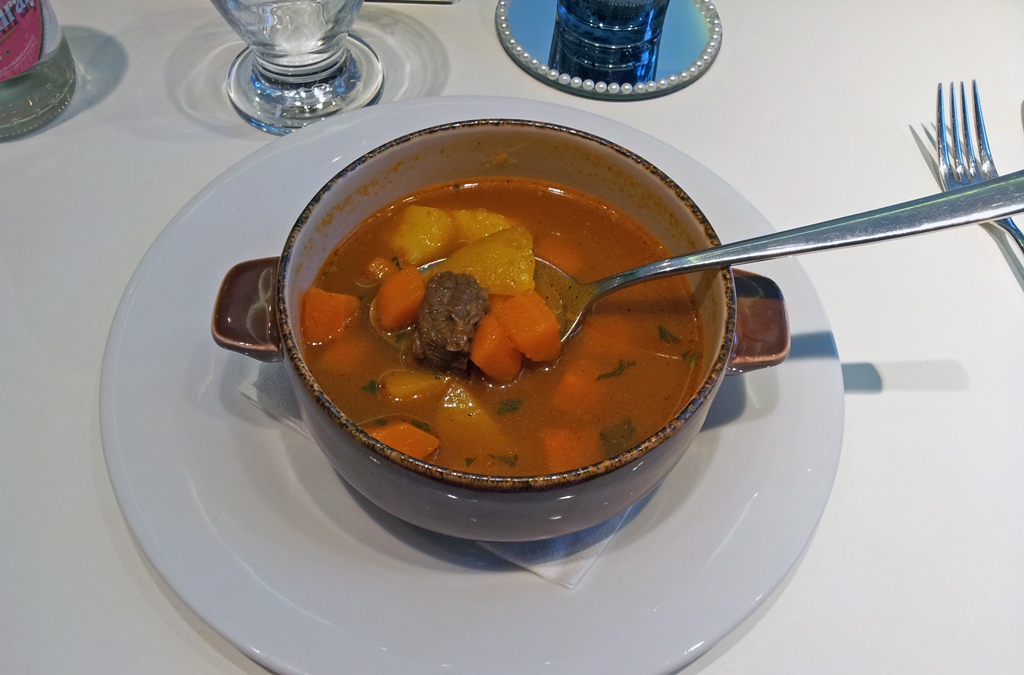
Goulash Soup
At this point we discovered that we were exhausted, so we found our way back to the
hotel and took a nap. On waking up, we found it was dinnertime, so we went out looking
for food again, this time heading north. After eating we weren't feeling sleepy at all
(being still on U.S. time), so we went exploring for a little bit. We quickly found a
large church, in front of which there was a large square filled with stalls selling food
and drink. The church was closed and we weren't hungry anymore, so we took some pictures
and headed toward the Danube. As we were on the Pest side of the river, we headed west.
St. István's Basilica and DiVino Stall
We eventually reached the river, a little bit north of the Chain Bridge. The Chain
Bridge (officially called the Széchenyi Chain Bridge, named for one of its early
supporters), as stated above, was the first permanent bridge across the Danube in
Budapest, and was finished in 1849. It was blown up by the Nazis in January of 1945
to make things difficult for the approaching Red Army, and was rebuilt in 1949. Fans
of Katy Perry may recognize it from its appearance in her "Firework" video. Looking
across the river from Pest, it is apparent that the Buda side is much hillier, with a
number of structures on the high ground near the river. We would be exploring some
of these later.
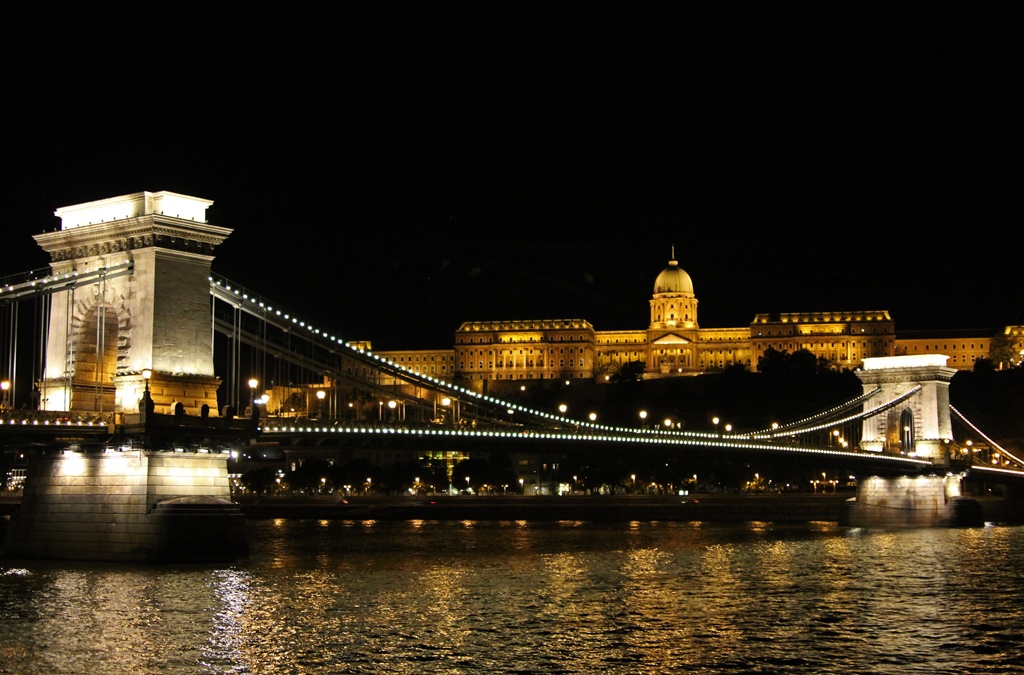
Széchenyi Chain Bridge and Buda Castle
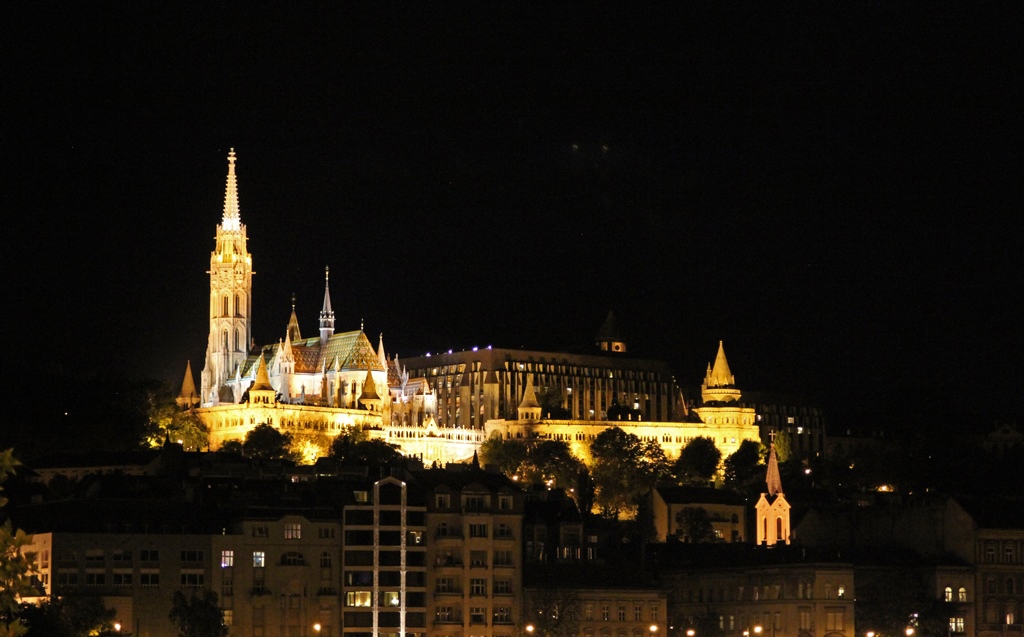
Matthias Church and Fisherman's Bastion
Bob Adjusting Camera
Still feeling energetic, we decided to cross the bridge to find out what we could see from
the other side.
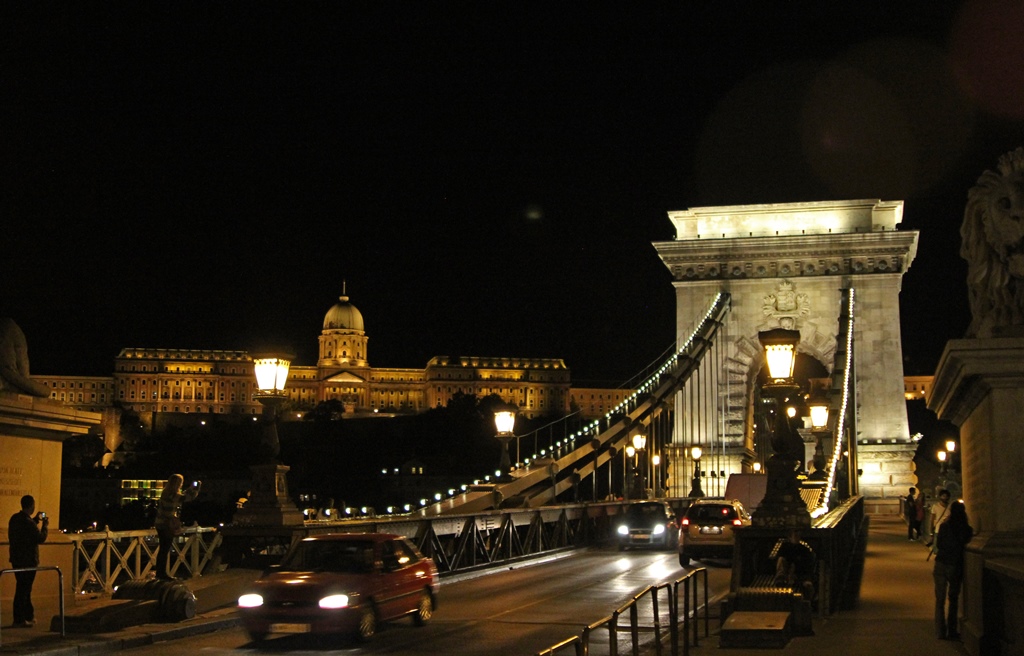
Chain Bridge from Pest End
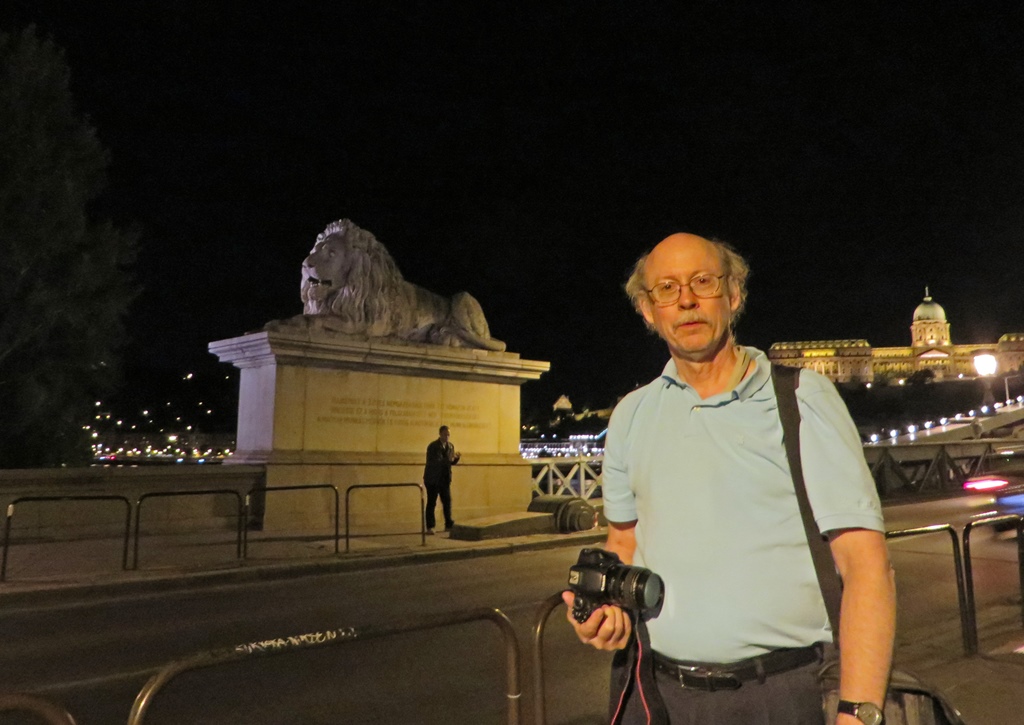
Bob with Lion and Buda Castle
Looking upstream from the bridge, we could see a large gothic-looking building on the
Pest side. This was the Hungarian Parliament building, which we would also be exploring
more closely later.
Parliament Building
There are large stone lions at both ends of the bridge. These date back to 1852, and
apparently survived the Nazis' mistreatment of the bridge.
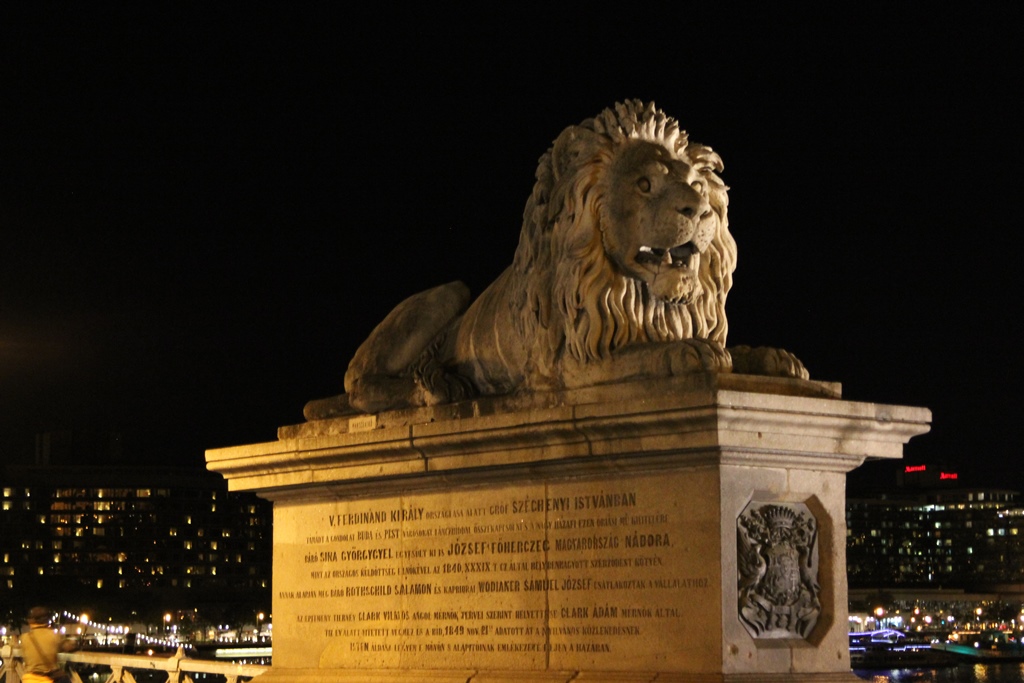
Chain Bridge Lion
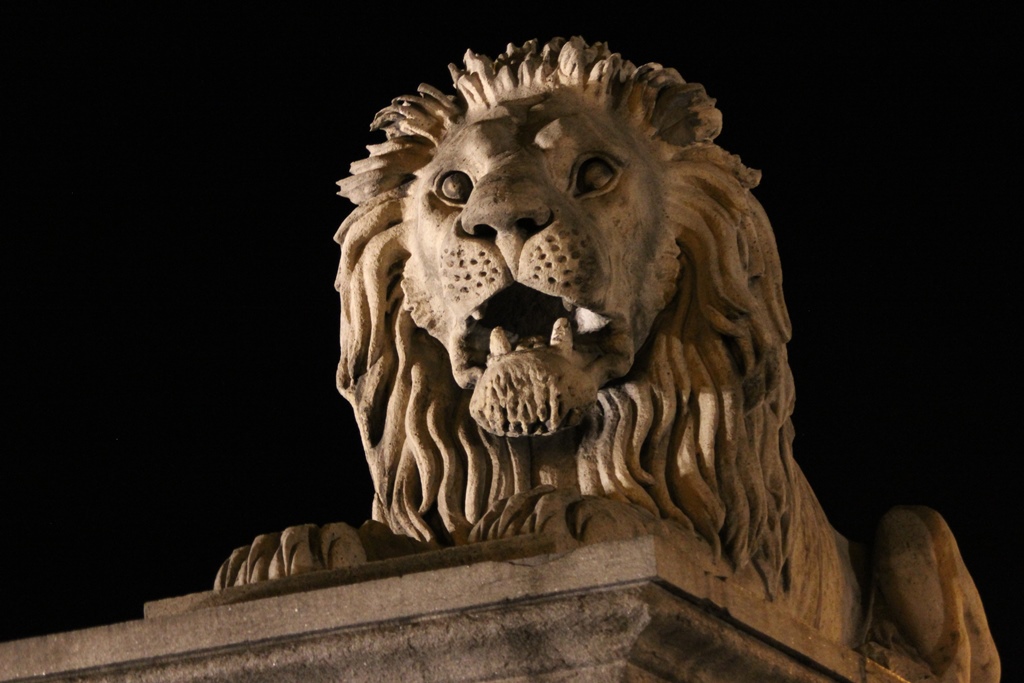
Chain Bridge Lion
At the Buda end of the bridge, the roadway enters a tunnel which cuts through the hill
atop which Buda Castle is perched. This tunnel was completed in 1856, and obviously
makes it much easier to get to the other side of the hill.
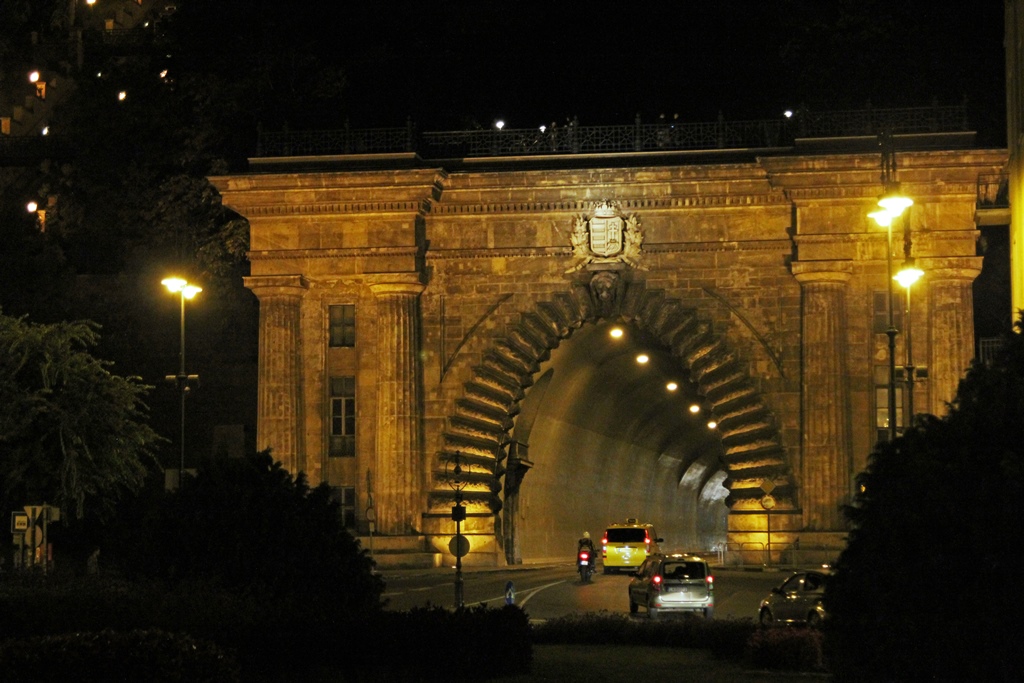
Buda Castle Tunnel

Buda Castle Tunnel and Parliament Building
Chain Bridge from Buda
We walked upstream on the Buda side to get a better look at the Parliament building. Above
the well-lit building we could see some creatures flying around in circles. We decided they
were some kind of birds.
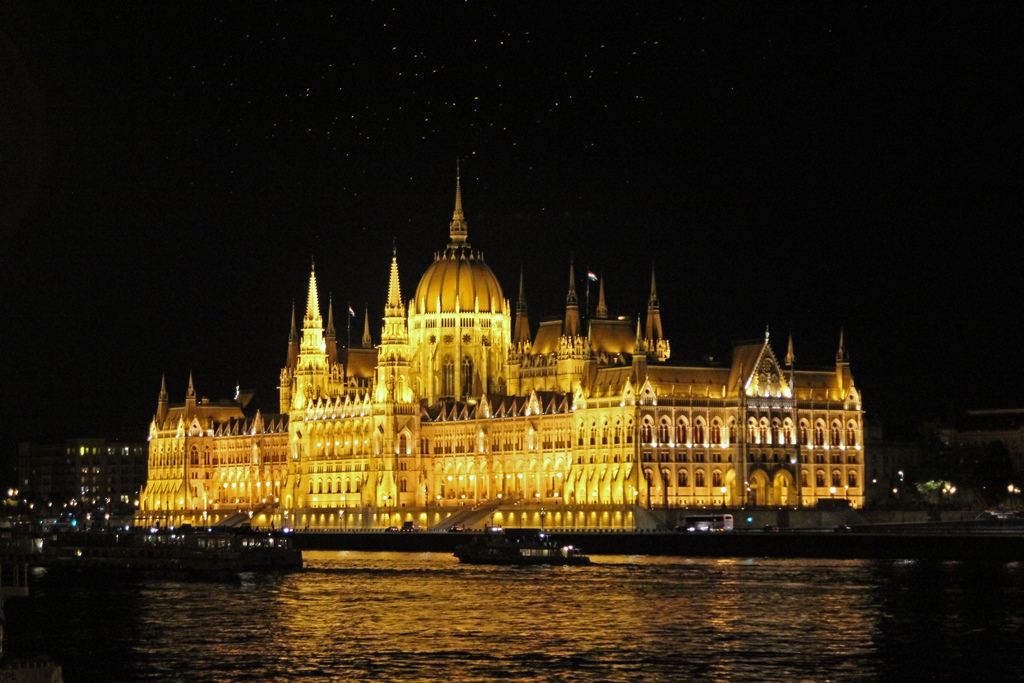
Parliament Building

Parliament Building, Danube and Chain Bridge
We retraced our steps back to the bridge, passing under an elaborate archway en route.
We crossed the bridge back to Pest, on the way noting some boats tied up along the
river, as well as the next bridge downstream (there are now several of them), called
the Elisabeth Bridge (named for a popular Austro-Hungarian empress who was tragically
assassinated in 1898). At the Pest end of the bridge is a large building called the
Gresham Palace (now a Four Seasons hotel). This building was originally built by the
London-based Gresham Life Assurance Company in 1906 as an office building/residence.
During the Soviet occupation, it was used as a Red Army barracks and later as a (by
this time decaying) apartment building. The building was purchased by investors in
1998 and, after extensive restoration, was opened as a luxury hotel in 2004.
Archway Along Danube Path
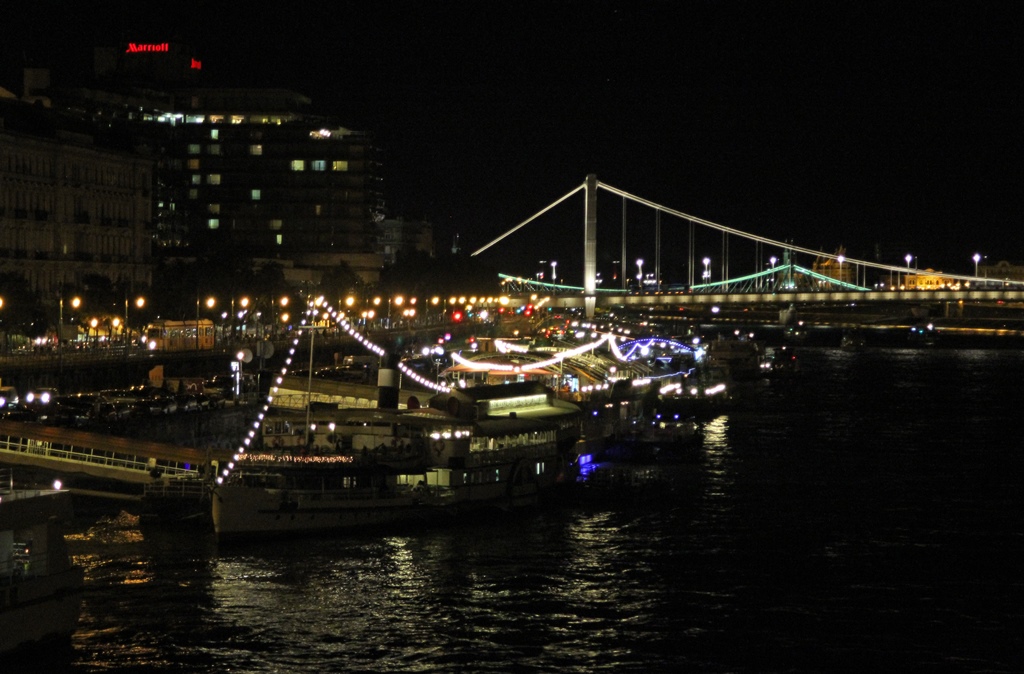
Boats and Elisabeth Bridge
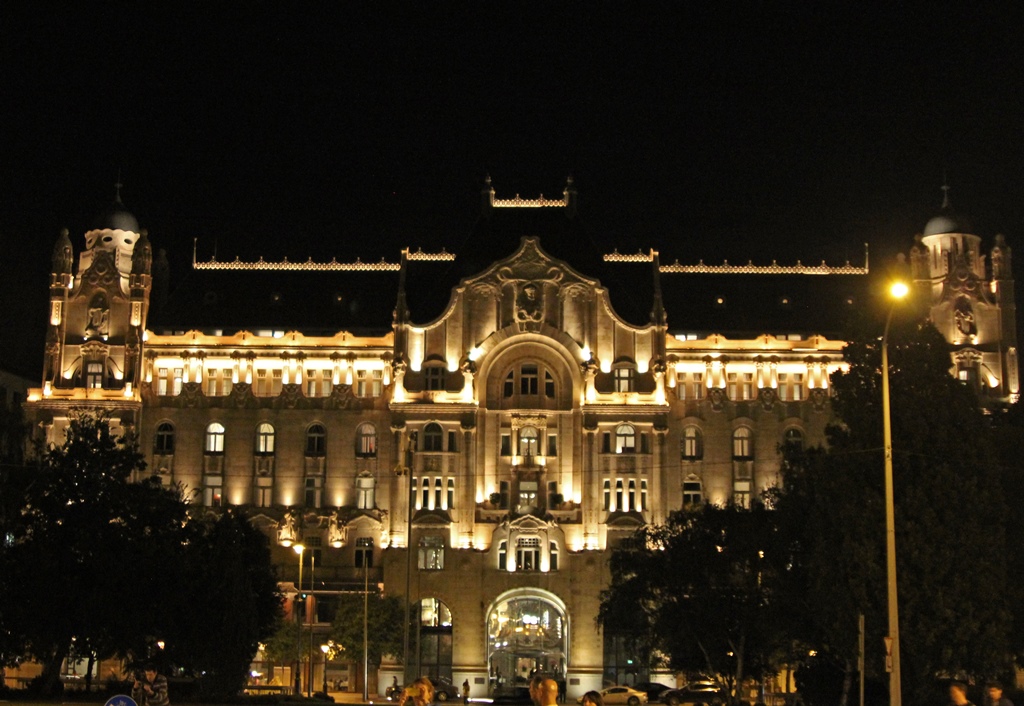
Gresham Palace
Heading back toward our own hotel, we passed through a small park across from
the hotel, where we couldn't help but notice a large, illuminated ferris wheel.
These wheels seem to have sprung up in a number of large cities that we've seen in
our travels - the most famous one is probably the London Eye. This is like that,
except it's called the Sziget Eye. Catchy.
Sziget Eye Belváros
